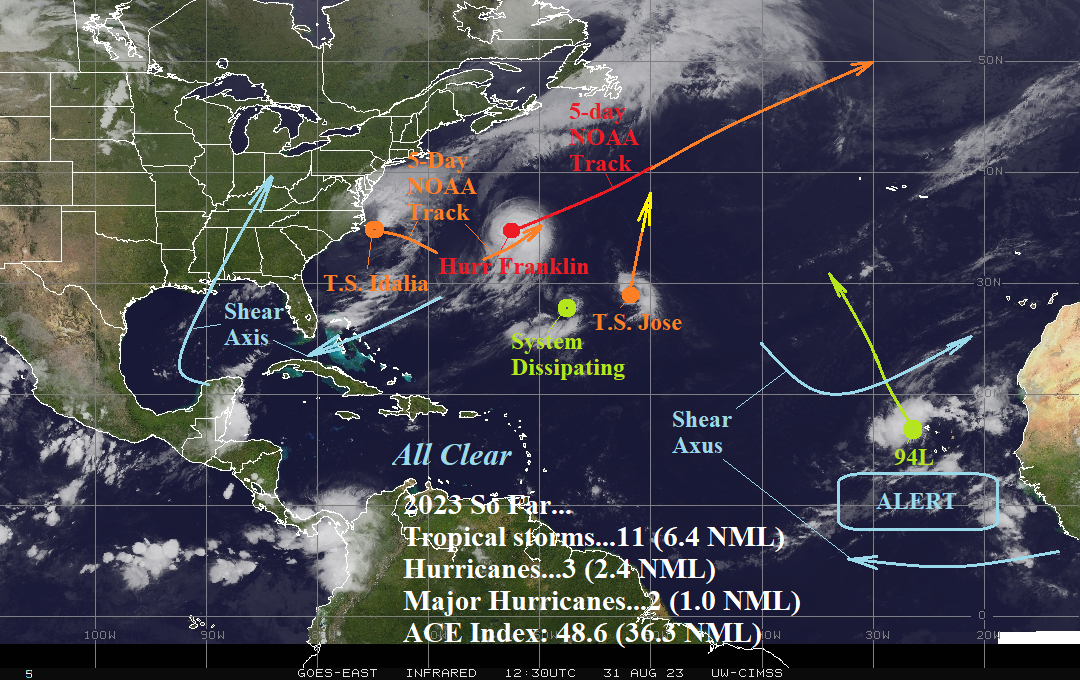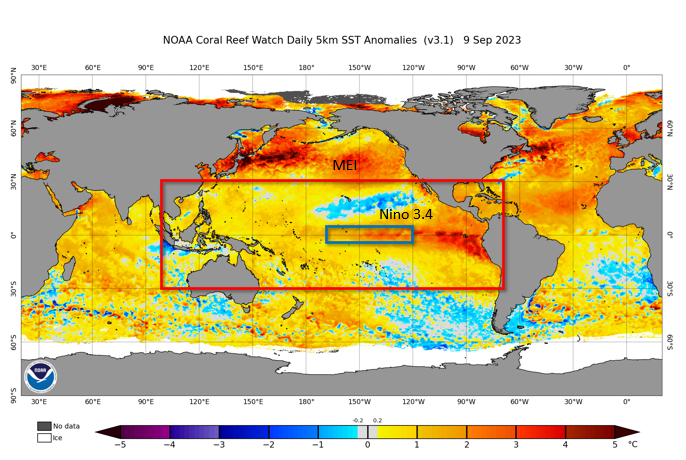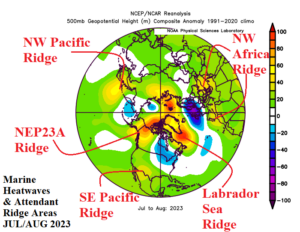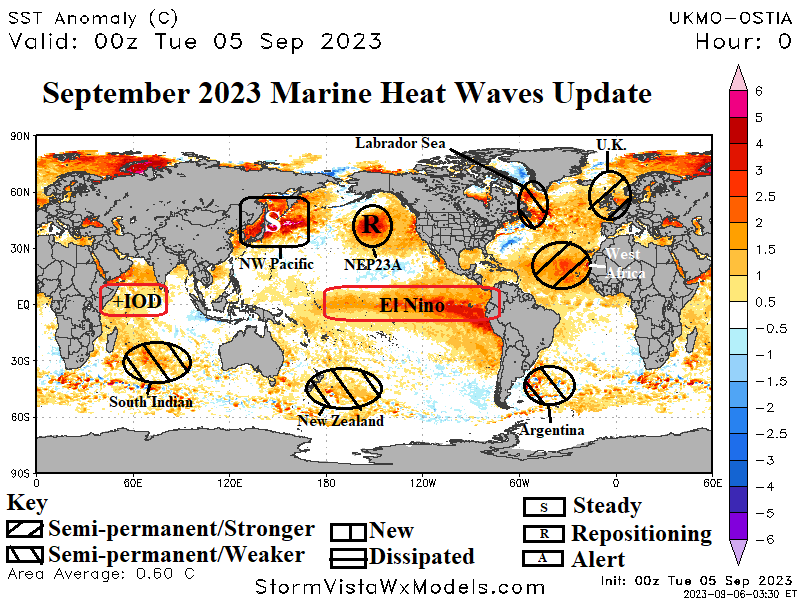
Based On ACE Index, 2023 About 33% More Active Than Normal So Far
08/31/2023, 10:36 am EDT
Understanding The Difference Between Multivariate ENSO Index and Nino34 SSTA Index
09/13/2023, 8:17 am EDT
Fig. 1: Daily global SSTA analysis identifying marine heat waves and their trend.
Discussion: Currently, Climate Impact Company is monitoring 8 marine heat waves (MHW). Most prominent is MHW NEP23A in the Northeast Pacific (Fig. 1). The core of MHW NEP23A has strengthened to the north of Hawaii. However, the eastward extension to the West Coast of North America earlier during summer 2023 is now weakening. The merging of NEP23A and warm SSTA in the Southeast Pacific associated with El Nino remains in question. If the warm SSTA regions join, the likelihood of the 2023-24 El Nino reaching similar intensity to the 1982, 1997, and 2015 super El Nino’s is likely. If the two warm SSTA zones do not join, El Nino 2023-24 is not as intense as the 3 historic episodes.
The Northwest Pacific MHW remains intense with not much change in strength. The MHW is well-correlated to the semi-permanent high-pressure ridge east-northeast of Japan (Fig. 2). Additionally, the upper ridge over Northwest Canada is associated with the Northeast Pacific MHW. In the North Atlantic, the quick-developing MHW in the Labrador Sea earlier this summer is now weakening. However, the MHW in this region is well-correlated to an amplified upper ridge present in JUL/AUG in this same region. Additionally, the MHW’s in the vicinity of U.K. and off the Northwest Coast of Africa are attached to the semi-permanent upper ridge roasting Southern Europe during summer of 2023.
In the southern hemisphere, semi-permanent MHW’s located on the South Pacific, near and east of New Zealand, and east of Argentina have weakened during the winter 2023 season. However, each is forecast to regain strength as the southern hemisphere warm season arrives. Also note the ongoing and developing El Nino plus the emergence of positive phase Indian Ocean dipole (+IOD).

Fig. 2: The northern hemisphere 500 MB anomalies for JUL/AUG 2023 identifying location of high-pressure ridge areas well correlated with marine heat waves.
![Climate-Impact-Company-logo-sm[1]](https://climateimpactcompany.com/wp-content/uploads/2023/08/Climate-Impact-Company-logo-sm1.png)
